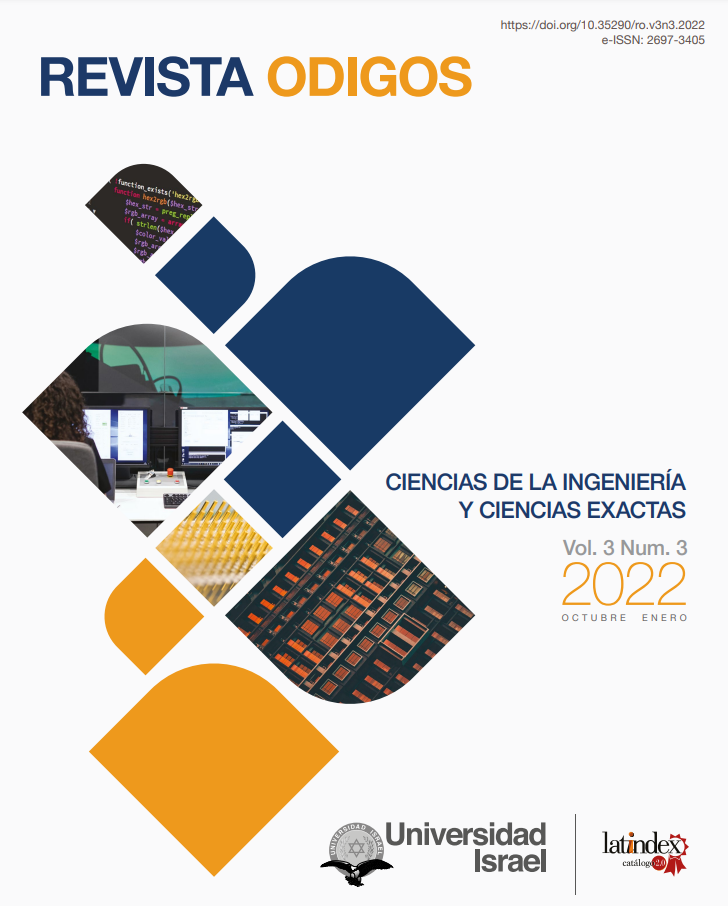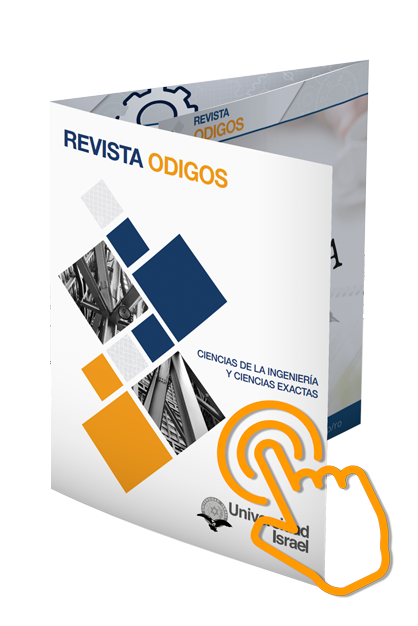Creación de un repositorio de código abierto de modelos en 3D de un kit odontológico utilizando Blender
DOI:
https://doi.org/10.35290/ro.v3n3.2022.674Palabras clave:
programación informática, teoría de la información, codificación, informatización de archivos, creatividadResumen
En el campo de la odontología y las ciencias médicas, las prácticas presenciales con el respectivo instrumento brindan una experiencia necesaria en la formación de profesionales. Sin embargo, el alto costo de los instrumentos y su respectivo mantenimiento son un obstáculo para estudiantes e instituciones con recursos limitados. El objetivo del presente trabajo de investigación es crear un repositorio gratuito de código abierto de modelos 3D perteneciente al instrumental de un kit odontológico, a partir de una metodología basada en procesos estandarizados en trabajos multimedia y recurrentemente, utilizados a su vez en producciones de índole tridimensional. Esta metodología se divide en tres amplias faces que son preproducción, producción y posproducción, cada una con sus diferentes etapas que favorecen al óptimo desarrollo del repositorio, de manera que los instrumentos modelados tengan un favorable acercamiento a la realidad. El estudio aspira a que el repositorio tenga diferentes usos que solventen las variadas necesidades presentes en la educación del campo odontológico y si es posible ser usados en trabajos con horizontes más extensos. Finalmente, el repositorio fue subido a una plataforma de libre acceso donde puede ser descargado para desarrollar proyectos que cumplan con la finalidad de los modelos almacenados.
Descargas
Referencias
Arriola, O., Tecuatl, G., y González, G. (2011). Software propietario vs software libre: una evaluación de sistemas integrales para la automatización de bibliotecas. Investigación bibliotecológica, 25(54). https://www.scielo.org.mx/scielo.php?script=sci_arttext&pid=S0187-358X2011000200003
Autodesk. (2022). Maya: Create expansive worlds, complex characters, and dazzling effects. https://www.autodesk.com/products/maya/overview
Beane, A. (2012). 3D Animation Essentials. John Wiley & Sons, Inc. https://www.wiley.com/en-us/3D+Animation+Essentials-p-9781118147481
Blender. (2022). https://www.blender.org/
Botella, P. (2018). Preproducción, producción y postproducción de un perfil audiovisual [Tesis de grado, Universitat Politècnica de València] http://hdl.handle.net/10251/110416
Bunsen, O., & Fleischmann, G. (2014). Mesh Optimization for Animation Purposes. En Deussen, O. & Lorenz, P. (Ed.). Simulation und Animation 1997 (SimVis 1997), 6-7 März 1997 (66-75), SCS Publishing House. https://researchr.org/publication/BunsenF97
Casals-Peidró, E. (2005). Hábitos de higiene oral en la población escolar y adulta española. RCOE, 10(4), 389-401 http://scielo.isciii.es/scielo.php?script=sci_arttext&pid=S1138-123X2005000400002
Chung, A. (2009). Software libre aplicado al dibujo industrial: el caso Blender. Industrial Data. Revista de Investigación, 12(1). https://doi.org/10.15381/idata.v12i1.6091
D’Elia, M. (2016). Guía de aprendizaje básico, medio y avanzado de modelado, texturizado, materiales y renderizado del programa Blender dirigido a estudiantes, Universidad Nueva Esparta, Municipio El Hatillo [Tesis de grado, Universidad Nueva Esparta] http://miunespace.une.edu.ve/jspui/bitstream/123456789/2833/1/TG5556.pdf
Dere, S., Sahasrabudhe, S., & Iyer, S. (2010). Creating Open Source Repository of 3D Models of Laboratory Equipments using Blender. En International Conference on Technology for Education (pp. 149-156). http://dx.doi.org/10.1109/T4E.2010.5550044
Díaz, F., Peiró, Jiménez, J., Barreda, A., Asenso, B. & Hervas, J. (2015). Modelado 3D para la generación de patrimonio virtual 3D modeling for the generation of virtual heritage. Virtual Archaeology Review, 6(12), 29-37. https://doi.org/10.4995/var.2015.4150
Fernández, M. (2011). Modelado, texturizado y ajuste de malla. Universidad Carlos III de Madrid. https://core.ac.uk/download/pdf/30045016.pdf
Flores, M. (2010). Razones para el ingreso a la carrera de odontología. Revista Odontológica de Los Andes. 5(1), 23-30. https://www.imbiomed.com.mx/articulo.php?id=70769
Goodwin, N. (1987). Functionality and usability. Computing Practice, 30(3), 229-233. https://dl.acm.org/doi/pdf/10.1145/214748.214758
Gratch, J., Kelly, J. & Bradley, C. (2007). Science Simulations: What Do They Contribute to Student Learning? https://www.learntechlib.org/p/25143/
Kofman, H. (2000). Modelos y simulaciones computacionales en la enseñanza de la física. https://www.oocities.org/ar/hugoakofman/download/documentos/modelos.pdf
Lara, M. (2020). Oferta, demanda, pertinencia y perfiles como requisito para la formación de especialistas en el área de odontopediatría y ortodoncia en la sierra ecuatoriana [Trabajo de grado, Universidad Central del Ecuador] http://www.dspace.uce.edu.ec/handle/25000/21206
Lozano, J. (2022). Diseño y creación de un personaje 3D para un videojuego MOBA [Trabajo de grado, Universidad de Alicante] http://hdl.handle.net/10045/124542
Maxon. (2022). Cinema 4D. https://www.maxon.net/es/cinema-4d
Meller, C. (2008). Importancia de la odontología preventiva en el adulto mayor: Una aproximación personal. Odontología Preventiva, 1(2), 73-82. http://www.medicinaoral.com/preventiva/volumenes/v1i2/73.pdf
Rhinoceros. (2021). https://www.rhino3d.com/
Rotab, M. (1999). Simulation modeling of a garment production system using a spreadsheet to minimize production cost. In International Journal of Clothing Science and Technology. 11(5). https://doi.org/10.1108/09556229910297554
Sempere, C. (2017). Preproducción, Producción y postproducción de un videoclip musical Crazy Head - Pugnator [Trabajo de grado, Universitat Jaume I] http://hdl.handle.net/10234/169011
Ulloa, A. (2018). Carta Odontológica. Órgano Científico de la Sociedad Peruana de Prótesis Dental y Máxilo Facial (2). http://www.sppdmf.pe/wp-content/uploads/2019/10/CARTA2018-2.pdf
Publicado
Número
Sección
Licencia
Derechos de autor 2022 Danilo Alejandro Soria Maldonado, Sara Marina Haro Loor

Esta obra está bajo una licencia internacional Creative Commons Atribución 4.0.
Los autores que participen de los procesos de evaluación y publicación de sus ediciones conservan sus derechos de autor, cediendo a la revista el derecho a la primera publicación, tal como establecen las condiciones de reconocimiento en la licencia Creative Commons Reconocimiento 4.0 Internacional (CC BY), donde los autores autorizan el libre acceso a sus obras, permitiendo que los lectores copien, distribuyan y transmitan por diversos medios, garantizando una amplia difusión del conocimiento científico publicado.
- Toda derivación, a partir de esta obra, deberá citar la fuente y a la primera publicación en esta revista. Se permiten derechos comerciales no lucrativos sobre sus contenidos.
- Los autores pueden realizar otros acuerdos contractuales independientes y adicionales para la distribución no exclusiva de la versión del artículo publicado en esta revista, es decir, podrán incluirlo en un repositorio institucional o publicarlo en un libro, siempre que indiquen claramente que el trabajo se publicó por primera vez en esta revista.
- Se permite y recomienda a los autores compartir su trabajo en línea, con la finalidad de intercambios productivos para una mayor y más rápida citación del trabajo como lo establece los efectos del movimiento ‘Acceso Abierto’.
- No puede aplicar términos legales o medidas tecnológicas que restrinjan legalmente a otros de hacer cualquier cosa que permita la licencia: https://creativecommons.org/licenses/by/4.0/deed.es
- La Revista ODIGOS es financiada completamente de los aportes realizados por nuestra entidad editora: Universidad Tecnológica Israel; por tal motivo, no establece cargos o cobros de ninguna índole a sus autores y colaboradores, así como tampoco genera pagos o remuneraciones de ningún tipo a ellos.
- Se asignará un Digital Object Identifier (DOI) a cada publicación.




